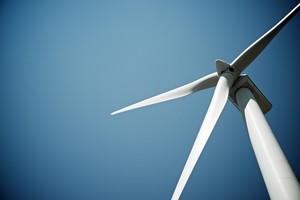

|
Edward Lowton
Editor |


|
| Home> | Energy Management | >Building energy management systems | >How battery storage is supporting UK industry |
How battery storage is supporting UK industry
04 August 2023
With energy costs a key item on the business agenda at the moment, one technology is helping manufacturers align longer-term sustainability strategies with shorter-term budget demands, says Solon Mardapittas

ENERGY COSTS are business-critical for companies in today’s economic climate, yet the UK’s deadline to achieve Net Zero is on the horizon.
Commercial buyers are looking to their Scope 3 emissions - those relating to the supply chain - which creates pressing issues for many UK manufacturers. Yet, for high-value manufacturing and for energy-intensive processes, cost is the most immediate problem. That said, companies want to become fully sustainable. While affordability and sustainability could seem to be competing agendas - especially in the current economic context - Battery Energy Storage Systems (BESS) are increasingly used across UK manufacturing to achieve cost-effective and cleaner, greener energy.
Showing a commitment to sustainability
In the Spring budget, Jeremy Hunt confirmed an extension to the Climate Change Agreement (CCA) scheme until April 2027. With 53 trade bodies and associations holding CCAs, this means that many manufacturing and engineering companies have continued to secure a significant discount on the Climate Change Levy (CCL). This, the Chancellor claimed, would allow eligible businesses access to a further £600m in tax relief for energy efficiency measures.
As a means for companies to offset some of the added energy costs during the energy crisis, this sustainability-driven discount has proved invaluable. But companies must be able to show continued and demonstrable sustainability improvement. A failure to meet standards could lead to demands for full CCL payment - losing the current 90% discount on the non-commodity portion of electricity costs over the remaining discounted years.
Even for manufacturers without a CCA in place, there are still issues of supply chain management, often involving customers scrutinising Scope 3 emissions - tied into their own sector CCAs and needing to show sustainability improvement to demonstrate their own case for continued tax relief.
Investing in BESS
Fortunately, for most UK manufacturers, investment in sustainable energy management can lead to significant cost savings. Battery Energy Storage Systems (BESS) are a clear case in point: providing more efficient Uninterruptible Power Supply (UPS) to avoid disruption to production; allowing for the best use of any on-site renewable generation; enabling on-site Electric Vehicle (EV) charging where it may otherwise be impossible due to grid constraints; generating new revenue via grid balancing contracts, all while clearly demonstrating a continued commitment to sustainability.
Many manufacturers rely on Uninterruptible Power Supply (UPS) to protect equipment against power supply disruption. However, with soaring energy bills and looking to a more sustainable future, this traditional option is fast becoming outdated.
The unit will lose around 10 - 15% capacity, even while idle, as it constantly switches from AC to DC. By contrast, modern Battery Energy Storage System (BESS) only loses around three percent and can protect an entire site, rather than individual assets. For one Powerstar client, an aerospace manufacturer, their precision manufacturing process was leading to excessive costs in scrappage and wastage when the site experienced power disruptions - around eight material blocks per year, each one costing over £150,000.
Avoiding disruption
Powerstar's solution, a 1MW BESS, now gives site-wide protection against disruption to production, meaning a payback period of only two years against initial investment. Similarly, for Parkinson Spencer Refractories, a client in the energy-intensive glass industry, a BESS solution was recommended since the site was suffering from increasingly frequent disruptions to grid supply.
These disruptions led to blackouts which caused kiln firing cycles to fail, wasting production time, using significant energy, and damaging product. A new 250kW BESS with a 500kVA voltage optimisation system now protects with site with UPS, saving the company between £20,000 and £100,000 per avoided incident.
The cheapest, and the greenest, unit of energy is the one you don’t use. As more companies invest in on-site renewables - generally solar PV or wind turbines - the capacity to store this energy is crucial. Renewable energy is inherently inflexible, dependent on weather conditions which are unlikely to reflect production needs. A BESS stores renewables to be used when required - for the greatest cost savings, when grid prices are at peak level. Combining on-site renewables with BESS technology can make for significant cost savings.
The case for renewables
Research from the University of Liverpool found that the price of solar energy is stable, as compared to fossil fuels, since running costs only involve asset operation and maintenance. With the introduction of zero-rated VAT, manufacturers investing in on-site solar can achieve a 20% discount on their installation. Similarly, and until April 2035, renewables infrastructure is exempt from business rates.
The strategic use of on-site renewables working in tandem with a BESS makes a major difference to energy affordability and sustainability. In addition to storing and managing renewable energy generated at the premises, a BESS can draw down cheaper grid energy off-peak for use at peak times or release it back to the grid when overall demand is high.
As renewables form a higher percentage of the UK's energy supply, the grid faces intense pressure in managing increasingly distributed power generation, balancing supply against demand. Where companies take up Demand Side Response (DSR) contracts, this can represent a whole new revenue stream. For Parkinson Spencer Refractories (PSR), Powerstar worked with GridBeyond, who aggregate batteries so that those with sub 1MW batteries can engage with Dynamic Frequency Response to generate income from their energy storage.
This initial investment by PSR now means that the company enjoys greater energy efficiency, with lower costs and a reduced carbon footprint, while gaining revenue from the connection of the BESS to GridBeyond Point - an AI-powered energy platform which helps the grid integrate more locally generated renewable energy into the network.
Qualifying for FFR
Looking to the most lucrative DSR option - Firm Frequency Response (FFR) contracts - BESS technology offers the ideal asset. To qualify for FFR, companies must be able to respond to frequency changes within 30 seconds.
Static FFR requires participants to reduce consumption for half an hour should there be a significant drop in frequency, while dynamic FFR manages much smaller variations, meaning responses must begin within a couple of seconds, and reduce or increase consumption from a few seconds up to several minutes. In this scenario, the instantaneous nature of a BESS makes it a valuable asset with the potential to generate the highest-possible income from the balancing services available.
Given the competing but equally vital demands of affordable and sustainable energy, the case for investment in BESS technology is compelling for manufacturers looking to reduce energy spend and cut emissions, on the path to Net Zero.
Solon Mardapittas is CEO at Powerstar
For more information:
Tel: 0333 230 1327



















